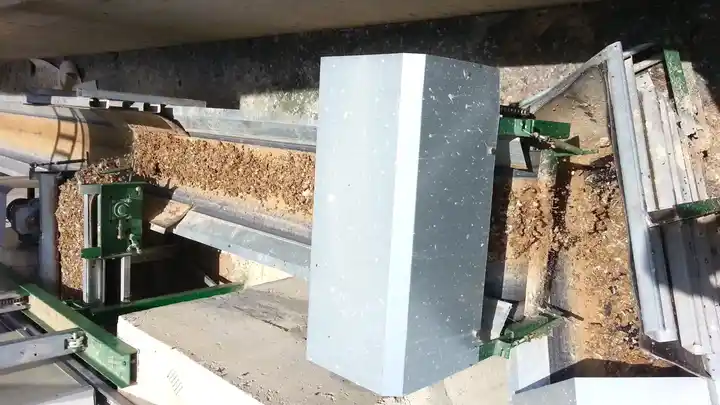Understanding the Benefits and Applications of Vertical Feed Mixers in Agriculture
Nov . 27, 2024 01:48 Back to list
Understanding the Benefits and Applications of Vertical Feed Mixers in Agriculture
Vertical Feed Mixers Enhancing Livestock Nutrition
In the realm of livestock management, ensuring optimal nutrition for animals is paramount to achieving high productivity and overall farm health. One essential tool in this process is the vertical feed mixer, a device designed to efficiently mix and blend various feed ingredients into a uniform diet for livestock. This article explores the advantages, functionalities, and considerations surrounding vertical feed mixers.
Understanding Vertical Feed Mixers
Vertical feed mixers, often called vertical auger mixers, are specialized machines that vertically mix feed ingredients. These machines feature one or more vertical augers that transport and mix ingredients as they rotate. The vertical design allows for a consistent, thorough mixing process that ensures an even distribution of nutrients throughout the feed.
Advantages of Vertical Feed Mixers
1. Uniform Mixture One of the most significant advantages of vertical feed mixers is their ability to create a homogeneous mix. The vertical auger design allows for complete incorporation of all feed ingredients, from grains and silage to minerals and supplements. This uniformity is crucial for ensuring that each animal receives the right nutrients in each feeding.
2. Versatility Vertical feed mixers can accommodate a wide range of feed types. Farmers can easily mix dry ingredients, wet feeds, and even chopped forage. This versatility allows livestock operations to customize rations according to specific nutritional needs, ultimately supporting better animal health and performance.
3. Labor Efficiency Using a vertical feed mixer can significantly reduce the time and labor involved in preparing animal feed. The mixing process is automated, and operators can prepare larger batches of feed in a shorter amount of time compared to manual mixing methods. This efficiency frees up time for farmers to focus on other essential tasks around the farm.
4. Reduced Waste With their ability to create a uniform mixture, vertical feed mixers help minimize feed wastage. Animals are more likely to eat all provided feed when it is well-mixed, reducing the likelihood of leftovers that can spoil and lead to economic losses.
5. Improved Digestibility Well-mixed feed can enhance nutrient availability and digestibility. By blending fibrous ingredients with concentrates, vertical feed mixers help improve overall feed quality, leading to better nutrient absorption and improved livestock performance.
vertical feed mixers

Considerations for Selecting a Vertical Feed Mixer
When investing in a vertical feed mixer, several factors should be considered to ensure optimal performance and suitability for specific farming operations.
1. Capacity Feed mixers come in various sizes and capacities. Farmers should assess their herd size and feeding frequency when choosing a mixer to ensure it meets their needs effectively.
2. Build Quality The construction quality and materials used in a mixer are essential for durability and longevity. Opting for a well-built machine can save costs in the long run due to reduced maintenance and replacement needs.
3. Power Source Vertical feed mixers can be powered by various sources, including tractors and electric motors. Farmers should select a power option that aligns with their existing equipment and farm infrastructure.
4. Ease of Use User-friendly design features, such as controls and discharge options, can greatly enhance the efficiency of feed preparation. Farmers should consider mixers that offer easy operation, particularly if multiple operators will be using the equipment.
5. Budget Finally, the cost of a vertical feed mixer is a crucial consideration. Farmers should evaluate their budget while also taking into account the long-term benefits, efficiency gains, and potential for improved livestock production.
Conclusion
Vertical feed mixers represent a significant advancement in livestock nutrition management. By providing a uniform blend of feed and enhancing labor efficiency, these machines play a critical role in supporting animal health and productivity. As technology continues to evolve, farmers can look forward to even more innovative solutions that enhance the effectiveness of feed mixing processes, contributing to the future sustainability of livestock farming.
-
Automatic Feeding Line System-Pan Feeder Nipple Drinker|Anping County Yize Metal Products Co., Ltd.
NewsJul.29,2025
-
Hot Sale 24 & 18 Door Rabbit Cages - Premium Breeding Solutions
NewsJul.25,2025
-
Automatic Feeding Line System Pan Feeder Nipple Drinker - Anping County Yize Metal Products Co., Ltd.
NewsJul.21,2025
-
Automatic Feeding Line System Pan Feeder Nipple Drinker - Anping County Yize Metal Products Co., Ltd.
NewsJul.21,2025
-
Automatic Feeding Line System - Anping Yize | Precision & Nipple
NewsJul.21,2025
-
Automatic Feeding Line System - Anping Yize | Precision & Nipple
NewsJul.21,2025






